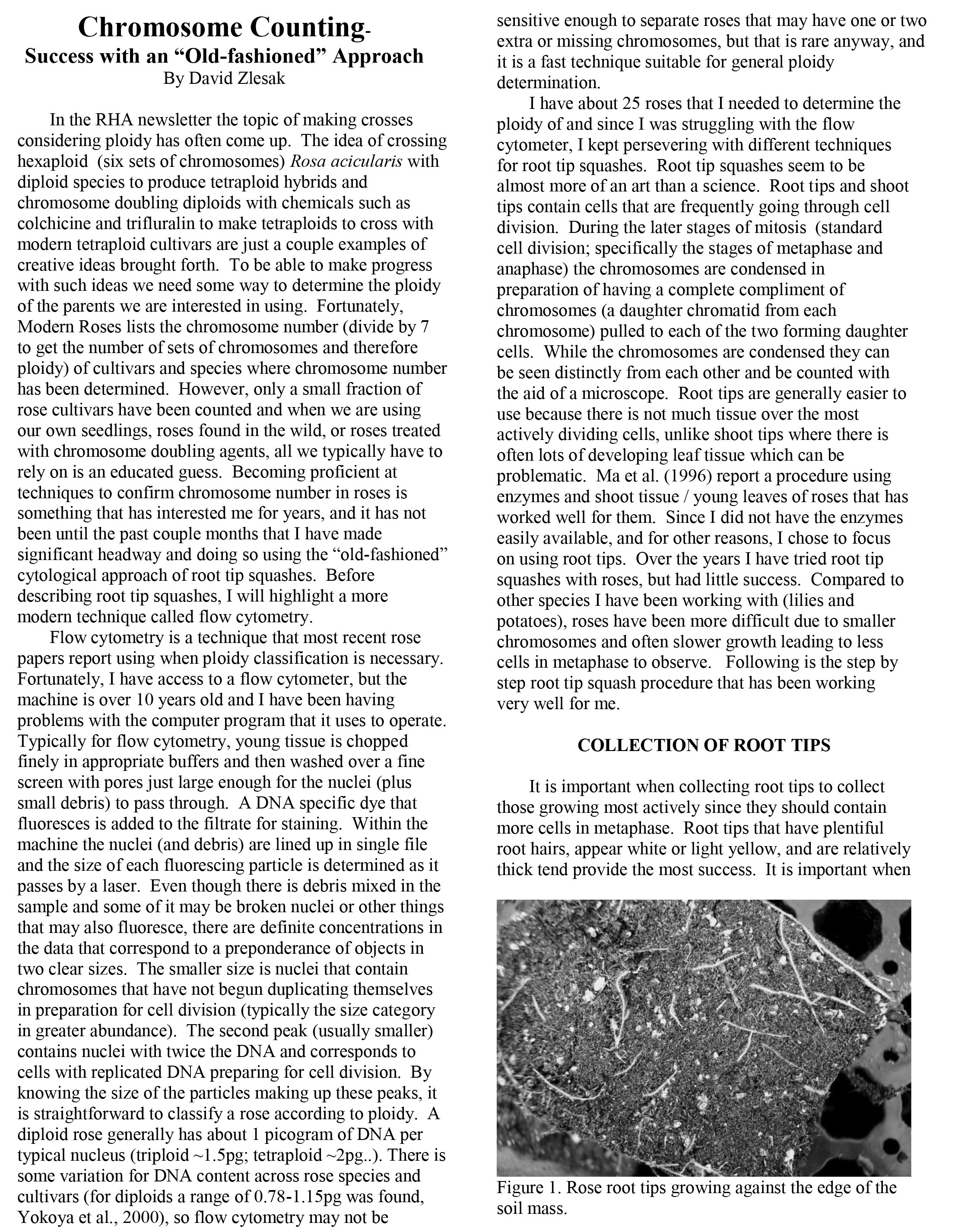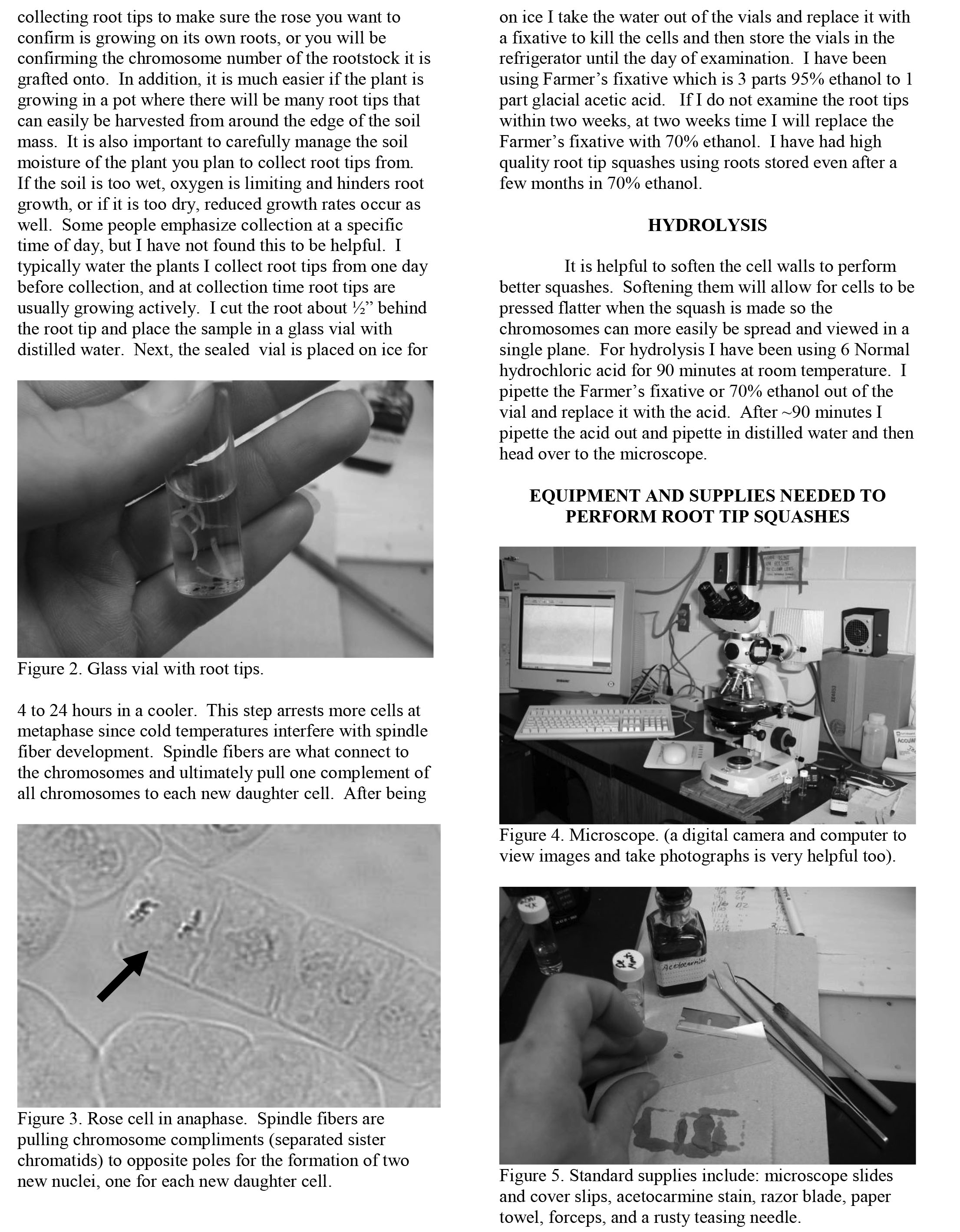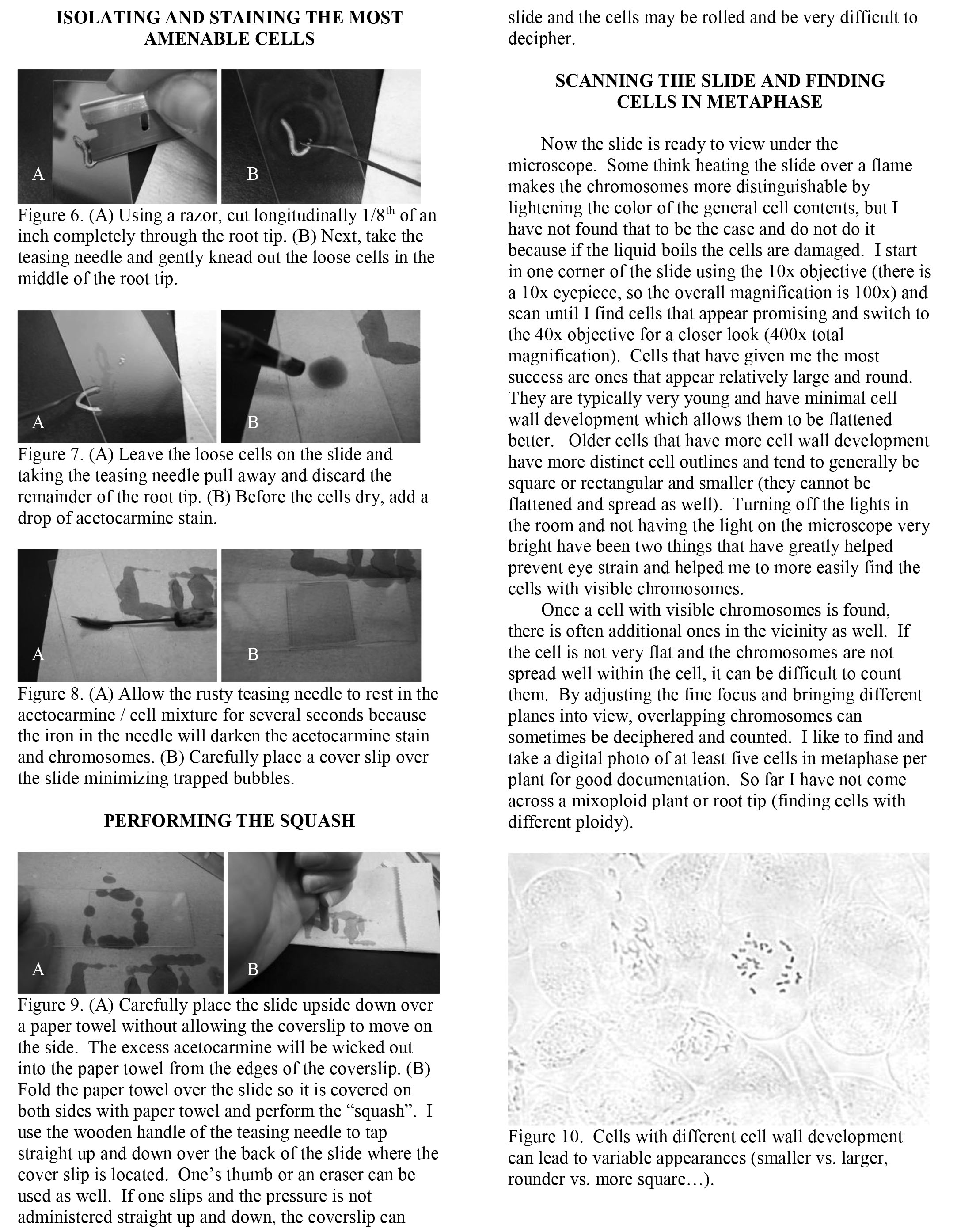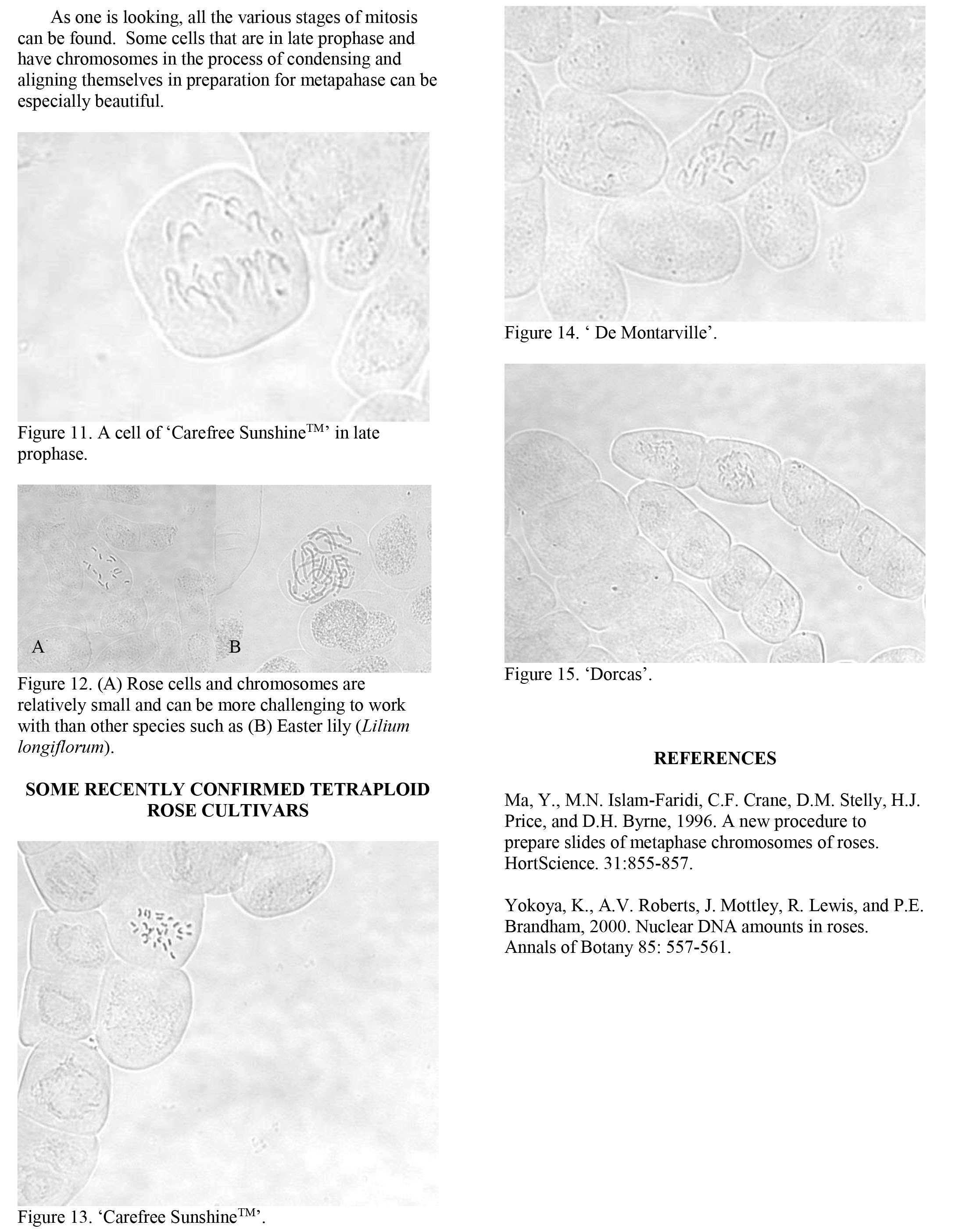Is the ploidy of roses done most accurately by physically counting the chromosomes on a root squash slide from a nice clear metaphase division? If so 2N=14 doesn’t it? I have always wondered this… do all (true) species of roses have identical diploid counts?
Great question, yes. It is hard to dispute physically seeing and counting chromosomes. It can be done from shoot tip cells too. I have done shoots for roses that I have had trouble getting adventitious roots to form from cuttings like R. eglanteria hybrids. Yes x=7 for roses and there are not exceptions that I am aware of. So 2n=2x=14. There are some papers on supernumerary or B chromosomes in roses, but that is an oddity. It is nice to view a few cells just to be certain. Once in a great while a diploid rose may look like it has 28 chromosomes. Mitosis was interrupted and the sister chromatids separated, but the cell didn’t divide and it looks like it is 4x. So I like to look at a few good cells. Very very rarely have I had a diploid where there was just one cell that did this. THe cold treatments or chemical treatments to try to arrest more cells at metaphase can disrupt mitosis and cause this to happen. Perhaps this is the reason too for spontaneous chromosome doubling in some plants where there has been a very wide temperature change that happened rapidly.
Sincerely,
David
I think I will have a go at making some aerial layers to try and get some easily accessible roots that will be easy to clean and isolate and have a go at making some root tip squashes at work. I was also going to ask about known examples of aneuploidy but seem you have pre-empted my question ![]()
This is a bit of an old thread; but it seems to be most relevant to my interests. I’m attempting to get images of chromosomes in metaphase by adapting a procedure from the following paper:
A New Procedure to Prepare Slides of Metaphase Chromosomes of Roses
Yan Ma, M. Nurul Islam-Faridi - Texas A&M - HortScience 31(5);855-875 1996
http://hortsci.ashspublications.org/content/31/5/855.full.pdf
The challenge I’m seeing is that simply have trouble digesting either the root tips or shoots. It certainly could be an issue with collection but I was wondering if there is a another procedure people have been successful with. The paper from 1996 is a little odd in that it intermingles solution concentrations in molarity, normality, and percentages. Is there a short reference paper or procedure that is favored? Videos or images of the material collection stage for roses would also be wonderful, as that is often difficult to convey in text.
This is what I have been using and it works well for me. It is much simpler and takes less chemicals. We don’t typically get as darkly stained chromosomes, but it works well. The key is getting roots that are actively dividing with some cells in metaphase. If we don’t have that no amount of chemicals can compensate. It also takes some practice isolating just the dividing cells to get rid of the surrounding firmer cells that make it difficult to flatten the cells of interest.
This article appeared in the spring 2004 issue of the RHA newsletter (pages 14-17)
If you have questions as you try it, please don’t hesitate to ask.



Here is the final page.

We all owe a big thank you to Dr. Z for the work that he has done.
Agreed!